#18 September 1793
Text

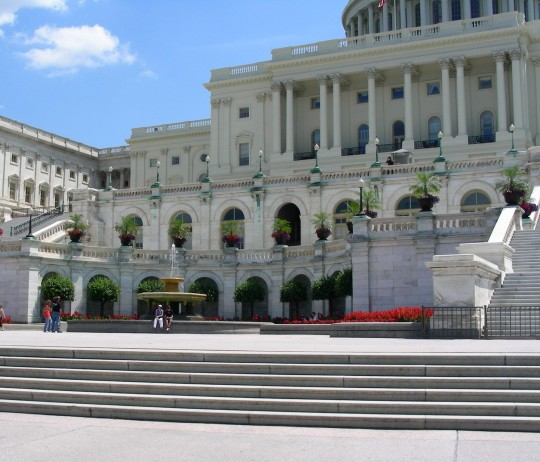
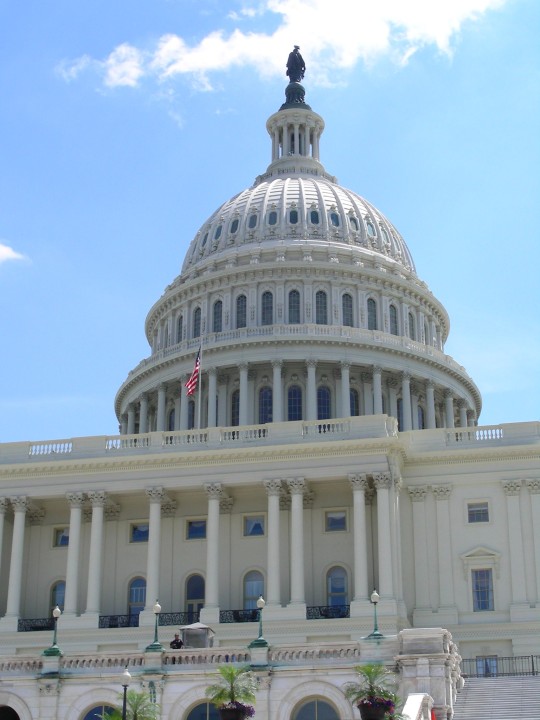


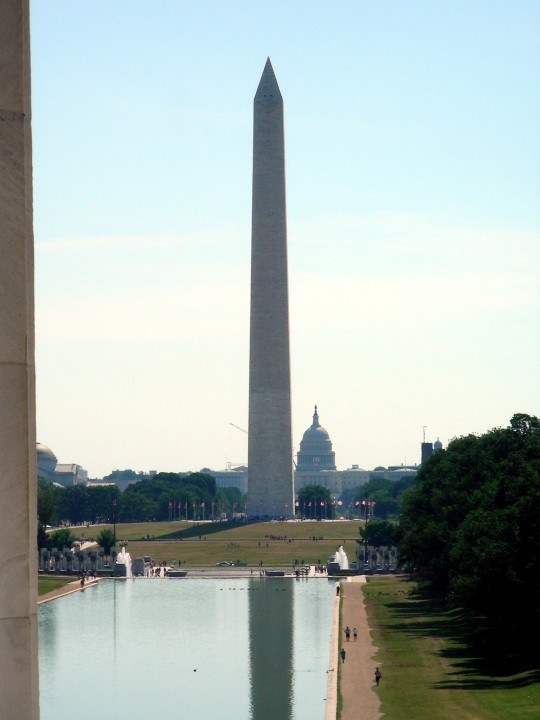

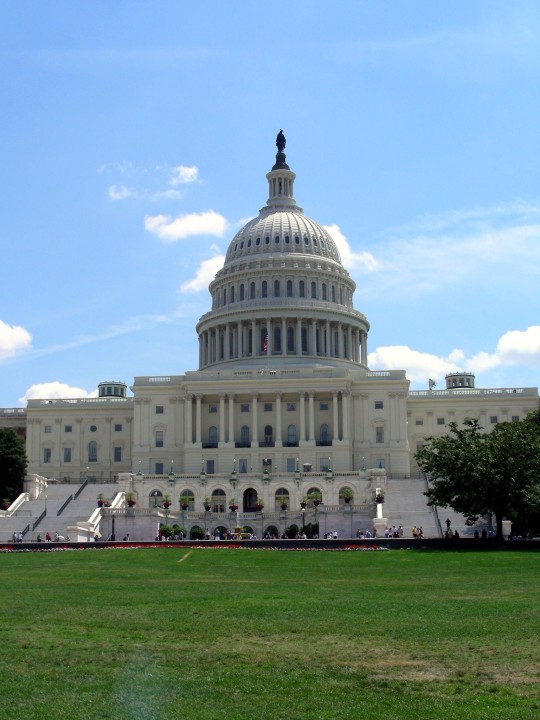

The first cornerstone of the United States Capitol is laid by George Washington on September 18, 1793.
#first cornerstone#United States Capitol#US Capitol#travel#original photography#vacation#tourist attraction#landmark#architecture#cityscape#Capitol Building#American neoclassicism#Lincoln Memorial#Washington Memorial#William Thornton#18 September 1793#130th anniversary#US history#USA#Gutzon Borglum#Washington DC#summer 2009#2019#New York City#Lower Manhattan
0 notes
Text

"The original "Uncle Tom",
Rev. Josiah Henson and wife; Dresden ,Canada (c1907)
Josiah Henson (June 15, 1789 – May 5, 1883) was an author, abolitionist, and minister. Born into slavery in Charles County, Maryland, he escaped to Upper Canada (now Ontario) in 1830, and founded a settlement and laborer's school for other fugitive slaves at Dawn, near Dresden in Kent County. Henson's autobiography, The Life of Josiah Henson, Formerly a Slave, Now an Inhabitant of Canada, as Narrated by Himself (1849), is widely believed to have inspired the character of the fugitive slave, George Harris, in Harriet Beecher Stowe's Uncle Tom's Cabin (1852), who returned to Kentucky for his wife and escaped across the Ohio River, eventually to Canada. Following the success of Stowe's novel, Henson issued an expanded version of his memoir in 1858, Truth Stranger Than Fiction. Father Henson's Story of His Own Life (published Boston: John P. Jewett & Company, 1858). Interest in his life continued, and nearly two decades later, his life story was updated and published as Uncle Tom's Story of His Life: An Autobiography of the Rev. Josiah Henson (1876).
Josiah Henson was born on a farm near Port Tobacco in Charles County, Maryland. When he was a boy, his father was punished for standing up to a slave owner, receiving one hundred lashes and having his right ear nailed to the whipping-post, and then cut off. His father was later sold to someone in Alabama. Following his family's master's death, young Josiah was separated from his mother, brothers, and sisters.His mother pleaded with her new owner Isaac Riley, Riley agreed to buy back Henson so she could at least have her youngest child with her; on condition he would work in the fields. Riley would not regret his decision, for Henson rose in his owners' esteem, and was eventually entrusted as the supervisor of his master's farm, located in Montgomery County, Maryland (in what is now North Bethesda). In 1825, Mr. Riley fell onto economic hardship and was sued by a brother in law. Desperate, he begged Henson (with tears in his eyes) to promise to help him. Duty bound, Henson agreed. Mr. R then told him that he needed to take his 18 slaves to his brother in Kentucky by foot. They arrived in Daviess County Kentucky in the middle of April 1825 at the plantation of Mr. Amos Riley. In September 1828 Henson returned to Maryland in an attempt to buy his freedom from Issac Riley.
He tried to buy his freedom by giving his master $350 which he had saved up, and a note promising a further $100. Originally Henson only needed to pay the extra $100 by note, Mr. Riley however, added an extra zero to the paper and changed the fee to $1000. Cheated of his money, Henson returned to Kentucky and then escaped to Kent County, U.C., in 1830, after learning he might be sold again. There he founded a settlement and laborer's school for other fugitive slaves at Dawn, Upper Canada. Henson crossed into Upper Canada via the Niagara River, with his wife Nancy and their four children. Upper Canada had become a refuge for slaves from the United States after 1793, when Lieutenant-Governor John Graves Simcoe passed "An Act to prevent further introduction of Slaves, and to limit the Term of Contracts for Servitude within this Province". The legislation did not immediately end slavery in the colony, but it did prevent the importation of slaves, meaning that any U.S. slave who set foot in what would eventually become Ontario, was free. By the time Henson arrived, others had already made Upper Canada home, including African Loyalists from the American Revolution, and refugees from the War of 1812.
Henson first worked farms near Fort Erie, then Waterloo, moving with friends to Colchester by 1834 to set up a African settlement on rented land. Through contacts and financial assistance there, he was able to purchase 200 acres (0.81 km2) in Dawn Township, in next-door Kent County, to realize his vision of a self-sufficient community. The Dawn Settlement eventually prospered, reaching a population of 500 at its height, and exporting black walnut lumber to the United States and Britain. Henson purchased an additional 200 acres (0.81 km2) next to the Settlement, where his family lived. Henson also became an active Methodist preacher, and spoke as an abolitionist on routes between Tennessee and Ontario. He also served in the Canadian army as a military officer, having led a African militia unit in the Rebellion of 1837. Though many residents of the Dawn Settlement returned to the United States after slavery was abolished there, Henson and his wife continued to live in Dawn for the rest of their lives. Henson died at the age of 93 in Dresden, on May 5, 1883.
#Josiah Henson#Dresden#uncle tom#original uncle tom#american revolution#dawn township#kent county#methodist#preacher#tennessee#ontario#rebellion#dawn settlement#john graves simcoe#province#slaves#united states of america#united states#war of 1812#african#kemetic dreams#afrakan#africans#brownskin#afrakans#brown skin
66 notes
·
View notes
Text
Some primary sources
I plan to add more whenever I find more.
Historie Parlamentaire de la Révolution Française ou Journal des Assemblées Nationales, depuis 1789 jusqu’en 1815
Volume 1 (May 1789)
Volume 2 (June-September 1789)
Volume 3 (September-December 1789)
Volume 4 (December 1789-March 1790)
Volume 5 (March-May 1790)
Volume 6 (May-August 1790)
Volume 7?
Volume 8 (November 1790-February 1791)
Volume 9 (February-May 1791)
Volume 10 (May-July 1791)
Volume 11 (July-September 1791)
Volume 12 (September-December 1791)
Volume 13 (January-March 1792)
Volume 14 (April-June 1792)
Volume 15 (June-July 1792)
Volume 16 (July-August 1792)
Volume 17 (August-September 1792)
Volume 18 (September 1792)
Volume 19 (September-October 1792)
Volume 20 (October-November 1792)
Volume 21 (November-December 1792)
Volume 22 (December 1792-January 1793)
Volume 23 (January 1793)
Volume 24 (February-March 1793)
Volume 25 (March-April 1793)
Volume 26 (April-May 1793)
Volume 27 (May 1793)
Volume 28 (July-August 1793)
Volume 29 (September-October 1793)
Volume 30 (October-December 1793)
Volume 31 (November 1793-March 1794)
Volume 32 (March-May 1794)
Volume 33 (May-July 1794)
Volume 34 (July-August 1794)
Recueil des actes du comité de salut public
Volume 1 (August 12 1792-January 21 1793)
Volume 2 (January 22-March 31 1793)
Volume 3 (April 1-May 5 1793)
Volume 4 (6 May-18 June 1793)
Volume 5 (19 June-15 August 1793)
Volume 6 (15 August-21 September 1793)
Volume 7 (22 September-24 October 1793)
Volume 8 (25 October-26 November 1793)
Volume 9 (27 November-31 December 1793)
Volume 10 (1 January-8 February 1794)
Volume 11 (9 February-15 March 1794)
Volume 12 (16 March-22 April 1794)
Volume 13 (23 April-28 May 1794)
Volume 14 (29 May-7 July 1794)
Volume 15 (8 July-9 August 1794)
Recueil de documents pour l’histoire du club des Jacobins de Paris
Volume 1 (1789-1790)
Volume 2 (January-July 1791)
Volume 3 (July 1791-June 1792)
Volume 4 (June 1792-January 1793)
Volume 5 (January 1793-March 1794)
Volume 6 (March-November 1794)
Histoire du tribunal révolutionnaire de Paris: avec le journal de ses actes.
Volume 1
Volume 2
Volume 3
Volume 4
Volume 5
Papiers inédits trouvés chez Robespierre, Saint-Just, Payan etc
Volume 1
Volume 2
Volume 3
Oeuvres complètes de Robespierre
Volume 1 (Robespierre à Arras)
Volume 2 (Les œuvres judiciaires)
Volume 3 is the correspondence, listed below
Volume 4 (Le defenseur de la Constitution)
Volume 5 (lettres à ses comettras)
Volume 6 (speeches 1789-1790)
Volume 7 (speeches January-September 1791)
Volume 8 (speeches October 1791-September 1792)
Volume 9 (speeches September 1792-June 27 1793)
Volume 10 (speeches June 27 1793-July 27 1794)
Oeuvres de Maximilien Robespierre (not the same as Oeuvres completés)
Volume 1
Volume 2
Volume 3
Oeuvres de Jerome Pétion
Volume 1
Volume 2
Volume 3
Volume 4
Oeuvres complètes de Saint-Just
Volume 1
Volume 2
Oeuvres littéraires de Hérault de Séchelles (1907)
Oeuvres de Danton (1866)
Discours de Danton (1910) by André Fribourg
Works by Desmoulins
La France Libre (1789)
Discours de la Lanterne aux Parisiens (1789)
Révolutions de France et de Brabant (1789-1791)
Volume 1 (number 1-13)
Volume 2 (number 14-26)
Volume 3 (number 27-39)
Volume 4 (number 40-52)
Volume 5 (number 53-65)
Volume 6 (number 66-79)
Volume 7 (number 80-86)
La Tribune des Patriots (1792) (all numbers)
Le Vieux Cordelier (1793-1794) (all numbers)
Jean Pierre Brissot démasqué (1792)
Histoire des Brissotins (1793)
Correspondences
Correspondance de Maximilien et Augustin Robespierre (1926)
Correspondance de George Couthon (1872)
Correspondance inédit de Camille Desmoulins (1836)
Correspondance inédite de Marie-Antoinette (1864)
Billuad-Varennes — mémoires et correspondance
Correspondance de Brissot
Lettres de Louis XVI: correspondance inédite, discours, maximes, pensées, observations etc (1862)
Lettres de Madame Roland (1900)
Volume 1
Volume 2
Correspondance inédite de Mlle Théophile Fernig (1873)
Journal d’une bourgeoise pendant la Révolution 1791-1793 by Rosalie Jullien (1881)
Memoirs
Memoirs of Bertrand Barère
Volume 1
Volume 2
Volume 3
Volume 4
Memoirs of Élisabeth Lebas
In French
In English
Mémoires de Charlotte Robespierre sur ses deux frères (1835)
In French
In English
Memoirs of Joseph Fouché
Volume 1 (English)
Volume 2 (French)
Mémoires de Brissot (1877)
Mémoires inédits de Pétion et mémoires de Buzot et Barbaroux (1866)
Memoirs of Barras — member of the Directorate (1899)
Mémoires inédits de madame la comtesse de Genlis depuis 1756 jusqu’au nos jours
Volume 1
Volume 2
Volume 3
Volume 4
Volume 5
Volume 6
Volume 7
Volume 8
Volume 9
Volume 10
Mémoires de Madame Roland
Volume 1
Volume 2
Mémoires de Louvet (1862)
Memoirs of the Duchess de Tourzel: Governess to the Children of France During the Years 1789, 1790, 1791, 1792, 1793 and 1795
Volume 1
Volume 2
Révélations puisées dans les cartons des comités de salut public et de sûreté générale, ou Mémoires (inédits) de Sénart, agent du gouvernement révolutionnaire (1824)
Free books
Danton (1978) by Norman Hampson (borrowable for an hour, renewable every hour)
Robespierre (2014) by Hervé Leuwers (borrowable for an hour, renewable every hour)
Collot d’Herbois — légendes noires et Révolution (1995) by Michel Biard
Choosing Terror (2014) by Marisa Linton
The Coming of the Terror in the French Revolution (2015) by Timothy Tackett
Augustin: the younger Robespierre by (2011) by Mary-Young
Journaliste, sans-culotte et thermidorien: le fils de Fréron, 1754-1802, d’après des documents inédits (1909) by Raoul Arnaud
Un Champion de la Royauté au début de la Révolution - François Louis Suleau (1907)
Part 1
Part 2
Part 3
Part 4
Camille Desmoulins and his wife — passages from the history of the dantonists (1876) by Jules Claretie
Vadier, président du Comité de sûreté générale sous la Terreur d’après des documents inédits (1896) by Albert Tournier
Mémoires historiques et militaires sur Carnot (1824)
Le Puy-de-Dôme en 1793 et le Proconsulat de Couthon (1877) by Francisque Mège
Le procès des Dantonistes, d'après les documents, précédé d'une introduction historique. Recherches pour servir à l'histoire de la révolution française (1879) edited by Dr. Jean François Eugène Robinet
Robert Lindet, député à l'Assemblée législative et à la Convention, membre du Comité de salut public, ministre des finances : notice biographique (1899) by Amand Montier
Prieur de la Côte-d'Or (1900) by Paul Gaffarel
Un épicurien sous la Terreur; Hérault de Séchelles (1759-1794); d'après des documents inédits (1907) by Emile Dard
Twelve Who Ruled (1941) by R. R. Palmer (borrowable for an hour, renewable every hour)
Bertrand Barère: A Reluctant Terrorist (1963) by Leo Gershoy (borrowable for an hour, renewable every hour)
Saint-Just : sa politique et ses missions (1976) by Jean-Pierre Gross (borrowable for an hour, renewable every hour)
The Glided Youth of Thermidor (1993) by François Gendron
Pauline Léon, une républicaine révolutionnaire by Claude Guillon
Billaud-Varenne: Géant de la Révolution (1989) by Arthur Conte
When the King Took Flight (2003) by Timothy Tackett (borrowable for an hour, renewable every hour)
Joseph Le Bon, 1765-1795; la terreur à la frontière (1932) by Louis Jacob
Volume 1
Volume 2
Resources shared by other tumblr users (thank you all very much!!!)
Resources shared by @iadorepigeons
Resources shared by @georgesdamnton
Resources shared by @rbzpr:
Fabre d’Eglantine resources shared by @edgysaintjust
Saint-Just resources shared by @sieclesetcieux
Saint-Just resources shared by @orpheusmori
Marat resources shared by @orpheusmori
My own translations
Lucile Desmoulins’ diary (1788, 1789, 1790, 1792-1793)
Charlotte Robespierre et ses amis (1961)
Laponneraye on the life of Charlotte Robespierre (1835)
Abbé Proyart on the childhood of Robespierre (1795)
Regulations for the internal exercises of the College of Louis-le-Grand (1769)
Regulations for law students at Louis-le-Grand (1782)
Belongings left by Danton, Fabre and Desmoulins after their arrest
Letters from Robespierre’s father
Robespierre family timeline
#frev resources#frev#french revolution#maximilen robespierre#augustin robespierre#robespierre#george couthon#couthon#camille desmoulins#desmoulins#joseph fouché#fouché#charlotte robespierre#elisabeth lebas#elisabeth duplay#billaud-varennes#jerome Pétion#jacques-pierre brissot#saint-just
456 notes
·
View notes
Text
The napoleonic marshal‘s children
After seeing @josefavomjaaga’s and @northernmariette’s marshal calendar, I wanted to do a similar thing for all the marshal’s children! So I did! I hope you like it. c:
I listed them in more or less chronological order but categorised them in years (especially because we don‘t know all their birthdays).
At the end of this post you are going to find remarks about some of the marshals because not every child is listed! ^^“
To the question about the sources: I mostly googled it and searched their dates in Wikipedia, ahaha. Nevertheless, I also found this website. However, I would be careful with it. We are talking about history and different sources can have different dates.
I am always open for corrections. Just correct me in the comments if you find or know a trustful source which would show that one or some of the dates are incorrect.
At the end of the day it is harmless fun and research. :)
Pre 1790
François Étienne Kellermann (4 August 1770- 2 June 1835)
Marguerite Cécile Kellermann (15 March 1773 - 12 August 1850)
Ernestine Grouchy (1787–1866)
Mélanie Marie Josèphe de Pérignon (1788 - 1858)
Alphonse Grouchy (1789–1864)
Jean-Baptiste Sophie Pierre de Pérignon (1789- 14 January 1807)
Marie Françoise Germaine de Pérignon (1789 - 15 May 1844)
Angélique Catherine Jourdan (1789 or 1791 - 7 March 1879)
1790 - 1791
Marie-Louise Oudinot (1790–1832)
Marie-Anne Masséna (8 July 1790 - 1794)
Charles Oudinot (1791 - 1863)
Aimee-Clementine Grouchy (1791–1826)
Anne-Francoise Moncey (1791–1842)
1792 - 1793
Bon-Louis Moncey (1792–1817)
Victorine Perrin (1792–1822)
Anne-Charlotte Macdonald (1792–1870)
François Henri de Pérignon (23 February 1793 - 19 October 1841)
Jacques Prosper Masséna (25 June 1793 - 13 May 1821)
1794 - 1795
Victoire Thècle Masséna (28 September 1794 - 18 March 1857)
Adele-Elisabeth Macdonald (1794–1822)
Marguerite-Félécité Desprez (1795-1854); adopted by Sérurier
Nicolette Oudinot (1795–1865)
Charles Perrin (1795–15 March 1827)
1796 - 1997
Emilie Oudinot (1796–1805)
Victor Grouchy (1796–1864)
Napoleon-Victor Perrin (24 October 1796 - 2 December 1853)
Jeanne Madeleine Delphine Jourdan (1797-1839)
1799
François Victor Masséna (2 April 1799 - 16 April 1863)
Joseph François Oscar Bernadotte (4 July 1799 – 8 July 1859)
Auguste Oudinot (1799–1835)
Caroline de Pérignon (1799-1819)
Eugene Perrin (1799–1852)
1800
Nina Jourdan (1800-1833)
Caroline Mortier de Trevise (1800–1842)
1801
Achille Charles Louis Napoléon Murat (21 January 1801 - 15 April 1847)
Louis Napoléon Lannes (30 July 1801 – 19 July 1874)
Elise Oudinot (1801–1882)
1802
Marie Letizia Joséphine Annonciade Murat (26 April 1802 - 12 March 1859)
Alfred-Jean Lannes (11 July 1802 – 20 June 1861)
Napoléon Bessière (2 August 1802 - 21 July 1856)
Paul Davout (1802–1803)
Napoléon Soult (1802–1857)
1803
Marie-Agnès Irma de Pérignon (5 April 1803 - 16 December 1849)
Joseph Napoléon Ney (8 May 1803 – 25 July 1857)
Lucien Charles Joseph Napoléon Murat (16 May 1803 - 10 April 1878)
Jean-Ernest Lannes (20 July 1803 – 24 November 1882)
Alexandrine-Aimee Macdonald (1803–1869)
Sophie Malvina Joséphine Mortier de Trévise ( 1803 - ???)
1804
Napoléon Mortier de Trévise (6 August 1804 - 29 December 1869)
Michel Louis Félix Ney (24 August 1804 – 14 July 1854)
Gustave-Olivier Lannes (4 December 1804 – 25 August 1875)
Joséphine Davout (1804–1805)
Hortense Soult (1804–1862)
Octavie de Pérignon (1804-1847)
1805
Louise Julie Caroline Murat (21 March 1805 - 1 December 1889)
Antoinette Joséphine Davout (1805 – 19 August 1821)
Stephanie-Josephine Perrin (1805–1832)
1806
Josephine-Louise Lannes (4 March 1806 – 8 November 1889)
Eugène Michel Ney (12 July 1806 – 25 October 1845)
Edouard Moriter de Trévise (1806–1815)
Léopold de Pérignon (1806-1862)
1807
Adèle Napoleone Davout (June 1807 – 21 January 1885)
Jeanne-Francoise Moncey (1807–1853)
1808: Stephanie Oudinot (1808-1893)
1809: Napoleon Davout (1809–1810)
1810: Napoleon Alexander Berthier (11 September 1810 – 10 February 1887)
1811
Napoleon Louis Davout (6 January 1811 - 13 June 1853)
Louise-Honorine Suchet (1811 – 1885)
Louise Mortier de Trévise (1811–1831)
1812
Edgar Napoléon Henry Ney (12 April 1812 – 4 October 1882)
Caroline-Joséphine Berthier (22 August 1812 – 1905)
Jules Davout (December 1812 - 1813)
1813: Louis-Napoleon Suchet (23 May 1813- 22 July 1867/77)
1814: Eve-Stéphanie Mortier de Trévise (1814–1831)
1815
Marie Anne Berthier (February 1815 - 23 July 1878)
Adelaide Louise Davout (8 July 1815 – 6 October 1892)
Laurent François or Laurent-Camille Saint-Cyr (I found two almost similar names with the same date so) (30 December 1815 – 30 January 1904)
1816: Louise Marie Oudinot (1816 - 1909)
1817
Caroline Oudinot (1817–1896)
Caroline Soult (1817–1817)
1819: Charles-Joseph Oudinot (1819–1858)
1820: Anne-Marie Suchet (1820 - 27 May 1835)
1822: Henri Oudinot ( 3 February 1822 – 29 July 1891)
1824: Louis Marie Macdonald (11 November 1824 - 6 April 1881.)
1830: Noemie Grouchy (1830–1843)
——————
Children without clear birthdays:
Camille Jourdan (died in 1842)
Sophie Jourdan (died in 1820)
Additional remarks:
- Marshal Berthier died 8.5 months before his last daughter‘s birth.
- Marshal Oudinot had 11 children and the age difference between his first and last child is around 32 years.
- The age difference between marshal Grouchy‘s first and last child is around 43 years.
- Marshal Lefebvre had fourteen children (12 sons, 2 daughters) but I couldn‘t find anything kind of reliable about them so they are not listed above. I am aware that two sons of him were listed in the link above. Nevertheless, I was uncertain to name them in my list because I thought that his last living son died in the Russian campaign while the website writes about the possibility of another son dying in 1817.
- Marshal Augerau had no children.
- Marshal Brune had apparently adopted two daughters whose names are unknown.
- Marshal Pérignon: I couldn‘t find anything about his daughters, Justine, Elisabeth and Adèle, except that they died in infancy.
- Marshal Sérurier had no biological children but adopted Marguerite-Félécité Desprez in 1814.
- Marshal Marmont had no children.
- I found out that marshal Saint-Cyr married his first cousin, lol.
- I didn‘t find anything about marshal Poniatowski having children. Apparently, he wasn‘t married either (thank you, @northernmariette for the correction of this fact! c:)
#Marshal‘s children calendar#literally every napoleonic marshal ahaha#napoleonic era#Napoleonic children#I am not putting all the children‘s names into the tags#Thank you no thank you! :)#YES I posted it without double checking every child so don‘t be surprised when I have to correct some stuff 😭#napoleon's marshals#napoleonic
66 notes
·
View notes
Text

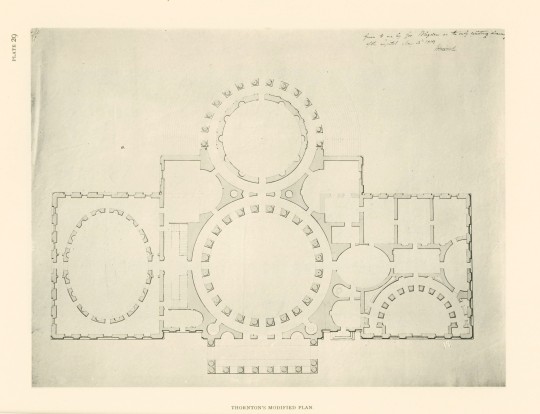
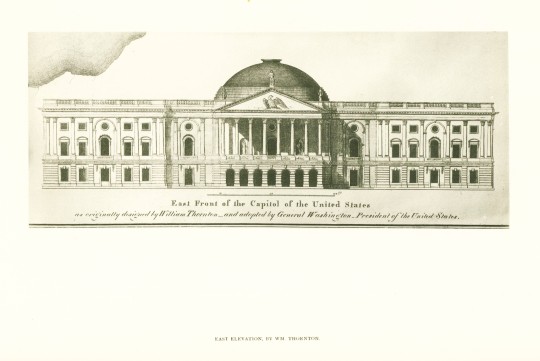
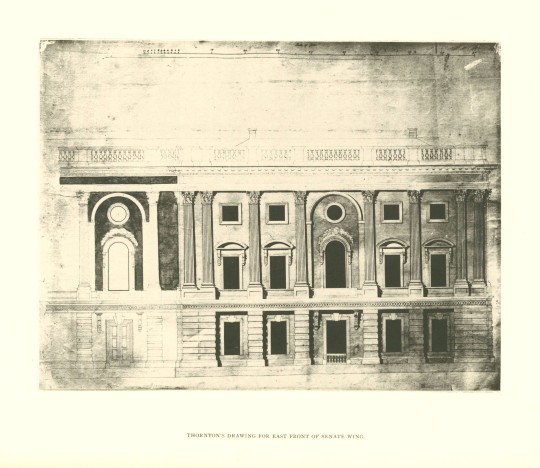


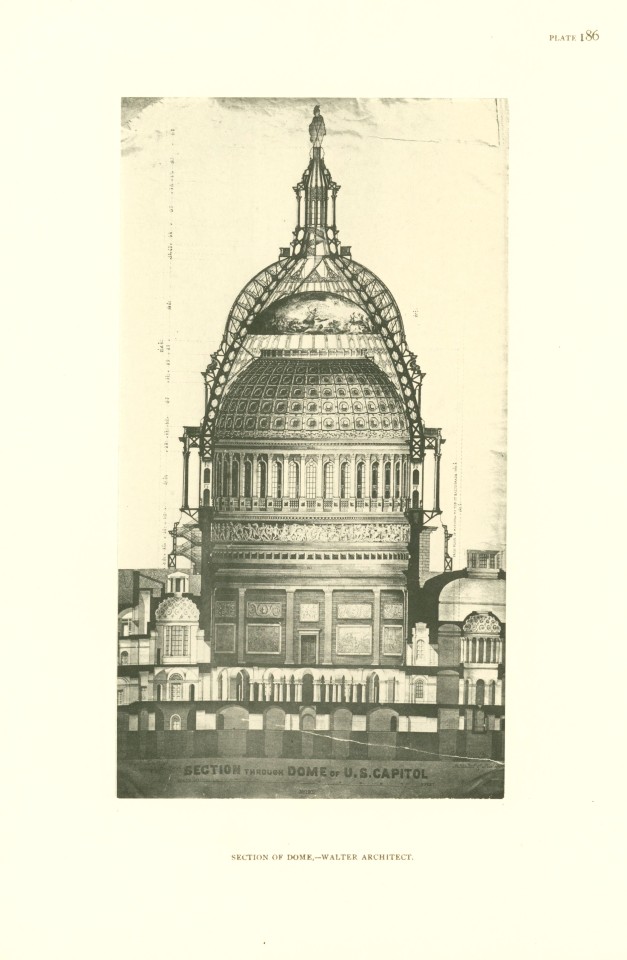

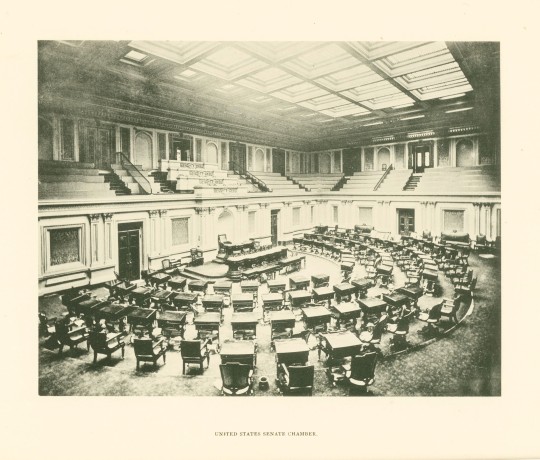
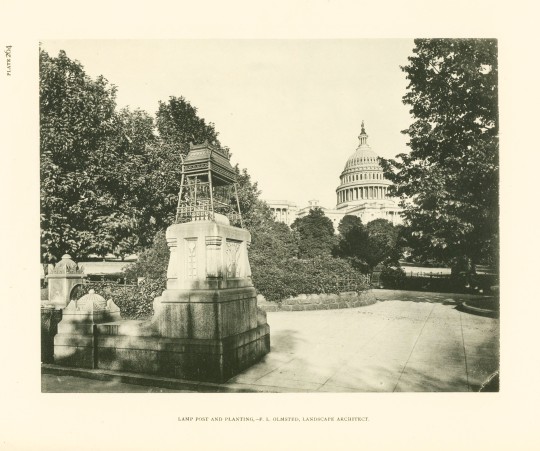
Milestone Monday
On this day, September 18, in 1793, George Washington laid the cornerstone of the United States Capitol Building. He was aided by eight Freemasons dressed in full masonic regalia marking the beginning of a period of construction that lasted seven years and the dawning of the growth of the nation. In 1792, Thomas Jefferson put out a call for architectural design submissions for the Capitol Building and was won over by a late entry from amateur architect William Thornton. Thornton’s design was officially approved in April of 1793, with the caveat that French architect Stephen Hallet would review and modify his plans as needed.
Architect Glenn Brown (1854-1932) explored the history and design of the Capitol Building in his book History of the United States Capitol, published in two volumes by the Government Publishing Office from 1900-1903. For a decade, Brown worked with numerous institutions and organizations to gather plans, illustrations, and the history of the building through architecture and interior design. He highlights that the importance of the building’s merit is not just in its construction and completeness, but its aspirations. Historian Charles Moore, secretary to Michigan Senator James McMillan, writes in the introduction, “[T]he Capitol is not a creation, but a growth, and its highest value lies in the fact that it never was, and it never will be, finished.”
View other Milestone Monday posts.
– Jenna, Special Collections Graduate Intern
#milestone monday#united states capitol building#capitol building#william thornton#Stephen Hallet#glenn brown#history of the united states capitol#Charles Moore#architecture#architectural history
22 notes
·
View notes
Text
More (hopefully) useful notes on Les Mis Letters:
“ the tragic spectacles of ’93 “
‘93 = this refers to the events of the year 1793, the execution of Louis XVI, the rise of the Jacobins and the famous Reign of Terror. This number shows up several times in the novel, often as a shorthand for the things that the year 1793 represents to whoever brings it up. Sometimes it’s a symbol of the Terror, sometimes of the rise of radical leftism (in its original sense) and the progressive ideals of the Constitution of Year I. Depends on who’s talking and in what context.
In this case it definitely refers to the Terror, but don’t be surprised to see that tone change pretty drastically when it’s coming from different characters with different politics.
“ a former member of the Council of the Five Hundred which favored the 18 Brumaire “
18 Brumaire = the date of Napoleon Bonaparte’s coup d’état, according to the Republican Calendar (18 Brumaire year VIII, AKA 9 November 1799)
So this guy was one of the supporters of the coup
The Republican Calendar was a new secular calendar that was invented during the Revolution, along with things like the metric system and other such concepts, some of which stuck, others obviously not so much.
The idea was to get rid of the religious and monarchist associations of the Gregorian Calendar. New months were invented, such as the aforementioned “Brumaire” which starts in late October and ends in late November. Year I began on 22 September 1792 (the autumn equinox) and the calendar was in use until 1 January 1806: a little over 13 years.
1806 is also the year that Myriel becomes bishop! So it’s the first year that the Gregorian Calendar is back in official use in France.
“ For my part, I am for Cæsar alone.”
Caesar = obviously this is a reference to the famous Gaius Julius Caesar of Ancient Rome fame, but when you see "Caesar" in Les Misérables, think "Napoleon". Because he’s a general who became an emperor, you see?
(Well a “dictator”, technically, but ykwim)
So: this dude is saying that he’s loyal to Napoleon.
EDIT: wanted to add this from @zeph1981
I would agree that the reference to Caesar does specifically refer to Napoleon, but I would go even further to say that this person is advocating for secular rule as opposed to rule by the church or (by “divine right”) the monarchy. I think he’s arguing for a separation of church and state, angry that the church has used its authority to horde money and power.
This is a better analysis of the quote in context, which I kind of ignored because I was rushing a bit
“ at one and the same time, an ultra-royalist and an ultra-Voltairian “
Voltairian = refers to Voltaire the famous enlightenment philosopher, generally not liked by the conservatives, which is why someone being both "ultra-royalist" and "ultra-Voltarian" is a bit unusual (but Hugo loves examining these kinds of contradictions)
39 notes
·
View notes
Text
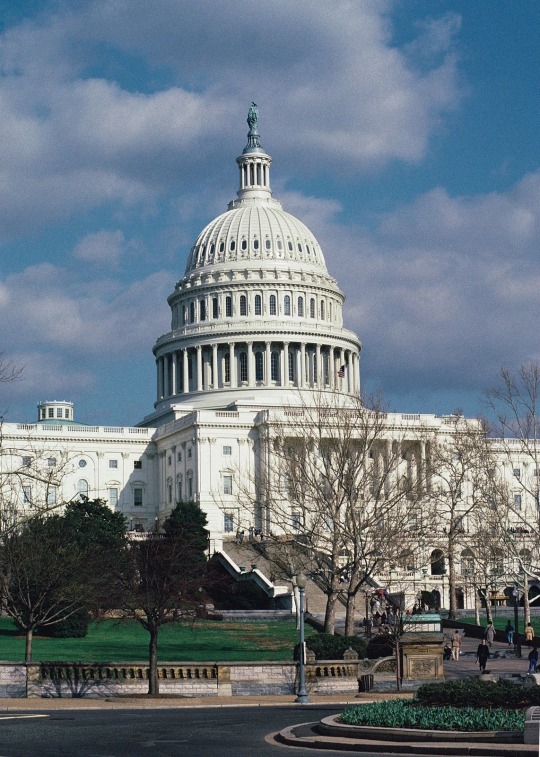

On September 18, 1793, George Washington lays the cornerstone to the United States Capitol building, the home of the legislative branch of American government.
7 notes
·
View notes
Note
do u have any info on Thèrése Gellé and SJ's relationship?
I have all the info there is! Which... is not much. What we know is that something likely did exist in terms of a romantic relationship in their teens (and maybe later, but that one is not proven). Some things could be extrapolated from little that we know, but we have only a few facts. What we know is the following:
Thérèse Gellé was born in 1766 in Blérancourt, as an illegitimate child of a local merchantess and a powerful royal notary Gellé. She was legitimized at 12, when her parents married each other.
SJ moved to Blérancourt at the age of 9. Thérèse was 10. We don't know when they met but since this was a super small community, I assume they knew each other (or at least, knew of each other) as kids.
At some point during their teen years, they seemed to have started a romantic relationship. There are no concrete sources for it except that it’s generally accepted that it happened. What we know is that in December 1785, they were godparents to a child in the village. Some historians see this as a sign that they were seen as a future married couple and chosen together because of this. I am not sure how sound this theory is, but I do think it’s interesting that they were chosen together.
Interestingly, most of the proof/sources for the relationship come from SJ’s early writing (namely, Organt and Arlequin-Diogène). While Thérèse is not mentioned by name, the context and certain (auto)biographical details that appear in these works strongly point out that the main female characters were based on her. (If anyone wants me to talk about what SJ’s writing (potentially) says of Thérèse and/or their relationship, I’d love to do that - I just have to do it in a different post because this one is getting super long).
According to some, SJ asked Gellé for a permission to marry Thérèse and was refused. Not sure if this is true, but since SJ was 18 at the time and still in school, AND not particularly rich, it’s not surprising that Gellé wanted a more “prosperous” option for his daughter.
Which brings us to 25 July 1786. While SJ was away at the boarding school, Thérèse married Emmanuel Thorin, a young notary from a rich family. Historians agree that this marriage (done seemingly in a hurry) was specifically to prevent SJ from marrying her.
SJ graduated and returned from school a few weeks later, and he lost it. Reportedly, he had a huge fight with his mother (for not telling him that Thérèse was getting married? For not presenting him as a good option to Gellé?) Soon after, in early September 1786, he took that infamous silver and ran away to Paris. (I assume this episode is familiar. It resulted with his mother putting him in the correctional house where he stayed for six months, until early 1787).
We don’t know what - if anything - happened between SJ and Thérèse after these events. What we do know is that the Revolution started and Gellé was a royalist who tried to stop revolutionary efforts in the village (he was the one who outed SJ as being too young to be elected for the Legislative Assembly in 1791). So yes, there was a lot of animosity between SJ and Gellé on the political grounds, but we don’t know anything about Thérèse during these years or how she might have reacted to all of this.
But there is a significant event in summer 1793. On the 7th anniversary of her marriage, Thérèse left Thorin and went to Paris. She stayed in a hotel very close to SJ’s place. We know this because SJ’s friend, Victor Thuillier, wrote a much-quoted letter about it. In the letter, he informs SJ that the village believes that SJ had kidnapped Thérèse (not against her will?) and also gives SJ Thérèse’s address in Paris. To which SJ replied basically: “I have no idea what you’re talking about. Tell everyone (in the village) that it’s not true. I am very busy, bye”. (Not direct quotes - you can read more in the link above, though not sure if it’s the best way to translate these letters).
Historians are divided over what happened. Those who are sympathetic towards SJ want to defend him against accusations of having an affair with a married woman, so they trust his word on it. Those unsympathetic towards SJ generally think that he lied and that he was totally behind Thérèse’s escape to Paris.
But what I am more concerned about is how things worked form Thérèse’s POV. She left her husband, AND the village thought that it was because of SJ. This ruined her reputation beyond repair. Even if she did not cheat on Thorin, she was the one who was seen as leaving.
As for SJ, nobody really talks about a possibility that he did help her, but not necessarily as a lover but as a friend - he wrote so much about protecting women from abuse and unwanted marriages that it wouldn’t be so impossible that he helped a childhood friend (tbh, it would be more shitty if he refused after writing so much about helping women). As for the affair... We don’t have any proof either way (except his reply to Thuillier). I disagree with historians who claim that “SJ would never”, because most of his writings actually point out that he was fine with women performing marital infidelity and the like. But this is not a proof either. So we just don’t know.
Thérèse and Thorin had a divorce hearing in September 1793. Historians point out that the reason for the divorce they listed was not adultery, but Thorin didn’t seem to ask for a no-fault, mutual decision divorce either. He seemed to ask or a divorce based on the fact that she left him. In the hearing, Thérèse said that the divorce was mutually desired and she seemed to have asked for her dowry back. Their divorce was decided then, but they had to wait for about 11 months for it to become legal. They were legally divorced in July 1794 (18 days before Thermidor).
That is basically it. We have no idea if SJ and Thérèse had any contact or what she did between this divorce hearing and Thermidor. We do know that she was kind of shunned in the village, while Thorin remarried and had children. Thérèse died in 1806, at the age of 39.
There is one thing, written by SJ near Thermidor, that some people argue could be related to Thérèse, but there is absolutely no proof of it: that strange “story” about a lovers’ misunderstanding. It was the last item written in the notebook found on SJ during Thermidor, and it is super unusual because he left no other writing of this kind, but it’s impossible to say whether it has anything to do with Thérèse or not.
28 notes
·
View notes
Text
youtube
Netflix made an educational history show. Let's assess the clothes 👀 (ft Lilla Crawford)
Save up to 40% off Brooklinen's bundles by shopping their biggest sale of the year. Click my link to shop https://bit.ly/BernadetteBrooklinen . [*If you're watching this video after 11/29, you can still get a discount by using the code BERNADETTE for $20 off your orders over $100]
More Lilla! https://ift.tt/307gJai
⤠ NEVER MISS AN UPDATE ⤟
📜 (FREE) NEWSLETTER https://ift.tt/tXm7T1M
📸 INSTAGRAM @bernadettebanner https://ift.tt/VoYF1Qa
♥️ PATREON https://ift.tt/xap4rPJ
RESEARCH ASSISTANT | Heathcliff McLean
IG @mxheathcliff https://ift.tt/yUS1ohi
⤠ SOURCES ⤟
[1] British painter. 1572. Portrait of Walter Devereux (1539–1576), First Earl of Essex. Oil on Wood. New York, NY. Metropolitan Museum of Art. https://ift.tt/bmw1suL.
[2] Osterkamp, Peggy. 2013. “What Is Velvet and How It Is Made? (Part One).” Peggy Osterkamp’s Weaving Blog. November 2, 2013. https://ift.tt/K5hUm8v.
[3] After Hans Holbein the Younger. c. 1537. Portrait of Henry VIII. Oil on Canvas. Liverpool, UK. Walker Art Gallery. https://ift.tt/ODiM0Se.
[4] Pickering, Henry. 1741. Sir Wolstan Dixie (1700–1767), 4th Bt, Market Bosworth. Oil on Canvas. Nottingham, UK. Nottingham City Museums & Galleries. https://ift.tt/1SanJr5.
[5] Royal Ontario Museum. 2013. “A Pair of 18th Century French Panniers Arrives at the ROM!” Royal Ontario Museum. September 13, 2013. https://ift.tt/gM3DuGN.
[6] Gautier-Dagoty, Jean-Baptiste-André. 1775. Marie Antoinette, Queen of France (1755-1793). Oil on Canvas. Versailles, France. Palace of Versailles. https://ift.tt/19biAtS.
[7] Unknown artist, European. c. 1770. Portrait of a Lady Holding an Orange Blossom. Oil on Canvas. Ontario, Canada. Art Gallery of Ontario. https://ift.tt/ViANtSW.
[8] Unknown photographer. c. 1850. Emma Gurney (1803-1860). Photograph. Durham, UK. Darlington Centre for Local Studies. https://ift.tt/e1UKwS2.
[9] Unknown photographer. c.1900. Woman with Straw Hat. Photograph. Private Collection. https://ift.tt/UMqskN5.
[10] Wirth, Frederick. 1860. Two Children and Woman. Carte-de-visite Photograph. Seattle, WA. University of Washington Libraries, Special Collections. https://ift.tt/FeHCdiy.
[11] Unknown illustrator. 1887. Susan B. Anthony. History of Woman Suffrage Volume 1 Edited by Elizabeth Cady Stanton, Susan B. Anthony, Matilda Joslyn Gage. https://ift.tt/7PS6k9s.
[12] Purtich, Kirstin. n.d. “Thomson Cage Crinoline.” Bard Graduate Center. https://ift.tt/2FeB5rz.
[13] N. Currier. 1851. The Bloomer Costume. Lithograph Print. Washington, D.C. Library of Congress. https://ift.tt/acn6Ovs.
[14] Unknown artist. c. 1855. Amelia Bloomer. Chromolithograph. Encyclopædia Britannica. https://ift.tt/uVIUh7z.
[15] Hilliard, Nicholas. 1598. Elizabeth I (1533–1603). Oil on Canvas. Derbyshire, UK. Hardwick Hall. https://ift.tt/xpBTVkR.
[16] Unknown maker. 1603. Corset from Elizabeth I’s Wax Effigy. London, UK. Westminster Abbey. https://ift.tt/QNvG4XA.
[17] Unknown maker. 1601-1800. Orthopaedic Corset to Fit Adult Male. Iron, Leather. London, UK. Wellcome Collection. https://ift.tt/KHp2WZ3.
[18] Gheeraerts the Younger, Marcus. 1592. Queen Elizabeth I (“The Ditchley Portrait”). Oil on Canvas. London, UK. National Portrait Gallery. https://ift.tt/Y9fr7jV.
[19] Unknown artist, English. 1588. Queen Elizabeth I. Oil on Panel. London, UK. National Portrait Gallery. https://ift.tt/oHKTCiX.
[20] Unknown maker, English. 1750-1780. Woman’s Corset. Linen Twill and Baleen. Los Angeles, CA. Los Angeles County Museum of Art. https://ift.tt/9xTfnGb.
[21] Unknown maker, Spanish. Late 16th Century. Verdugado. Linen, Reed. Zamora, Spain. Museo Etnográfico de Castilla y León. https://ift.tt/7shLGEQ.
[22] Rabel, Daniel. 1626. The Royal Ballet of the Dowager of Bilbao’s Grand Ball. Pen and Black ink, Watercolour. Paris, France. Musée du Louvre. https://ift.tt/9udOgzV.
via YouTube https://www.youtube.com/watch?v=y0yAN8PHc2M
0 notes
Photo
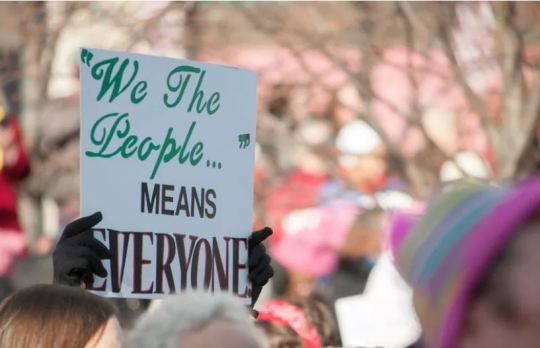
Astro-Inspiration for March 23, 2023 ~ A Big Day!!!
Pluto, the slow-moving planet of death and rebirth, leaves Capricorn for futuristic and revolutionary Aquarius today... for a preview of the coming decades. Pluto moved into Capricorn in 2008, the year that will go down in history as one of the worst financial crises America has ever faced. It’s interesting and significant to note that the bookend of Pluto’s entry into Capricorn is bank failures – echoing what happened in 2008. Pluto will go back and forth between the last few degrees of Capricorn and the first few degrees of Aquarius for the next two years.
Pluto will be in Aquarius from:
• March 23rd to June 11, 2023
• January 20th to September 1st, 2024
• November 18, 2024, to January 18, 2044
As Pluto moves back and forth between Capricorn and Aquarius, let’s hope practical application meets intellect and innovative vision. What will the next 20 years bring? There will likely be Worldwide changes in science and technology (AI and ChatGPT have served as an introduction to the perils of Pluto in Aquarius), but, more importantly, we’ll see profound shifts in civil rights and humanitarianism.
The most powerful people will be those who work together and who value the lives, feelings, and experiences of others. We can also hope that governments and systems that have worked against each other in the past can find common ground during this time and forge a united alliance for the care and protection of our planet.
The last time Pluto was in Aquarius was from 1778 to 1798. Historical events that happened during that time: The North American colonies and Great Britain fought the War of Independence from 1775 to 1783. Uranus the modern ruler of Aquarius, was discovered in 1781. The French Revolution began in 1789. The Bill of Rights was ratified in 1791. The Reign of Terror started in 1793.
Today’s Quote
"There is no more neutrality in the world. You either have to be part of the solution, or you're going to be part of the problem." ~ Eldridge Cleaver
Today’s Sky
Pluto moves into Aquarius at 8:13 am EDT. The Aries Moon Sextiles Mars in Gemini. Aries Moon V/C 1:12 pm to 2:41 pm EDT. Moon enters Taurus and Squares Pluto in Aquarius.
The sky speaks to you if you will let it. Every day it delivers a message that each person hears in a uniquely different way. This is not personal or predictive astrology, it's creative astrology meant to help you understand and align your mind, body, and spirit with the unique soul vibration of each passing day.
To quote Joseph Campbell: “The goal of life is to make your heartbeat match the beat of the universe, to match your nature with Nature.”
I hope you enjoy and your life is enriched by these Astro-inspirations.
Thanks for reading. Please like and follow Patricia Lantz, Astrologer
0 notes
Photo


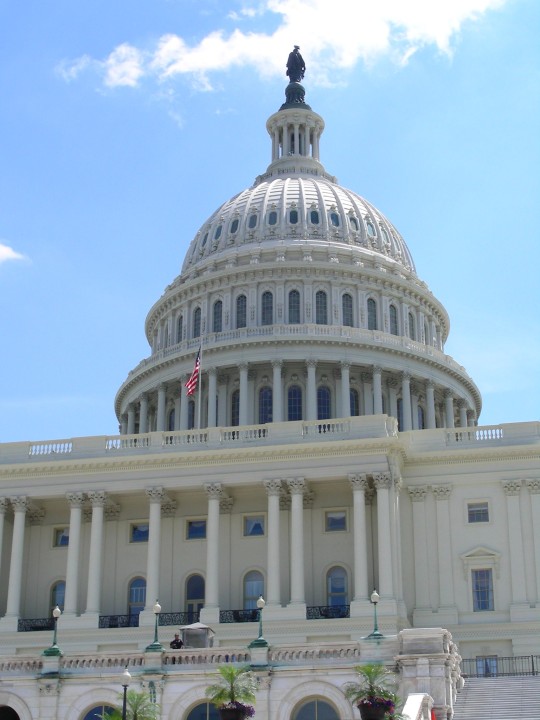



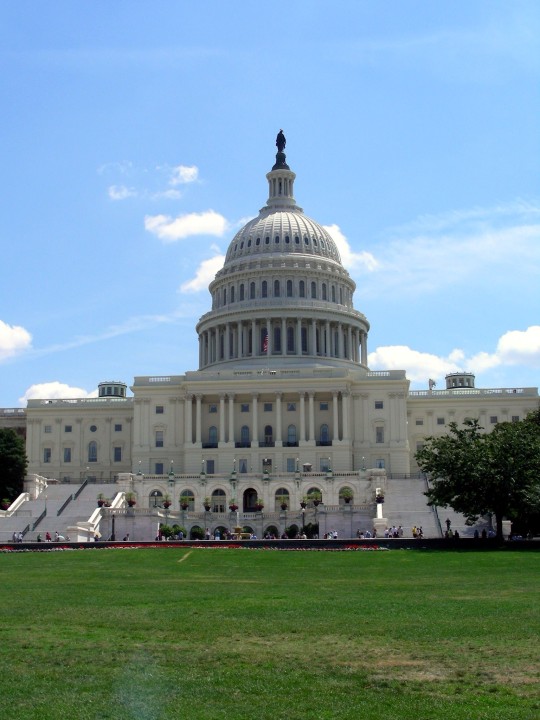



The first cornerstone of the United States Capitol is laid by George Washington on September 18, 1793.
#United States Capitol#Capitol Building#cornerstone#18 September 1793#USA#original photography#architecture#exterior#Washington DC#travel#vacation#cityscape#summer 2009#American neoclassic#William Thornton#George Washington#New York City#Mount Rushmore National Memorial#South Dakota#Federal Hall National Memorial#Manhattan#2019
0 notes
Text
"An officer of the Revolution": The story of Mountjoy Bayly [Part 4]
Continued from part 3
Mr. Mountjoy goes to Washington

A 1793 map by Kroe, A. van der (Danish). It shows proposed government buildings, with relief shown by hachures and also covers Georgetown. Courtesy of DC Vote.
By the second decade of the 19th century, Mountjoy and his family was establishing itself in Washington. One year after his petition to Maryland General Assembly was accepted and he was paid five years full pay as a captain, he would be appointed sergeant-at-arms and doorkeeper of the US Senate. He would replace the existing sergeant-of-arms, James Mathers, who died on September 2, 1811, chosen as his successor on November 6th. [40] His time as a sergeant-at-arms would last 22 years, ending only on December 9, 1833. He only received $1,500 a year as sergeant-at-arms, more than the Assistant Doorkeeper but many times less than the Secretary of the Senate, even as people depended on him to keep order. While in this position, he placed his vouchers and certificates from his military service in the capitol's senate chamber in 1812 but they were destroyed when the British burned the capital in 1814, just like many other records, such as the 1810 census of the city. [41]
Reprinted from my History Hermann WordPress blog.
Since there is no census, that limits the available historical information. Existing remarks on pensions of revolutionary war soldiers, and other documents, shows that he was definitively in the city in 1818 (also see here) and 1819. There is also information indicating that he observed the manumission of enslaved Blacks in 1817, 1819, 1820, 1822, and 1823. There there is his federal veterans pension, for which he applied for in 1818 while living in the District, with certain records finalized in 1828, but he remained on the federal pension roll until March 1836 as existing records indicate. [42]
A site, "Early Washington, D.C. Law and Family," created by William G. Thomas and the Center for Digital Research in the Humanities at University of Nebraska-Lincoln, has bountiful information about Mountjoy. In 1814, he was one of 12 members on a jury that ruled in favor of two enslaved Blacks (John and Serena) and against a preacher/slaveowner named Henry Moscross. The same occurred in a case between three enslaved Black females (a mother named Rachel and her two children Eliza and Jane) and Henry Jarvis. The same year, he was part of a jury that ruled against an enslaved Black man named Emanuel Gasbury of Northumberland County, Virginia, and in favor a slaveowner named Henry W. Ball. However, by 1816, Mountjoy was a witness to a seeming marriage bond between Richard Love, Car Withers, and Thomas Langston. Nothing else, even looking at the existing page for Mountjoy on the subject, is currently known.
Mountjoy and the Fourth Washington Ward

After 1822, Mountjoy would have been living at lot 726, on Capitol Hill, if the map from the Library of Congress is matched up with the location of the Bayly House on Google maps.
In 1820, the year that the city's charter was changed, the Bayly family reappears on the census, living Washington Ward 4, Washington City, part of the District of Columbia. One enslaved Black female, aged 26-44, one free Black man, over age 45, and six "free white persons" are listed as part of the household. [43] The six White peoples are his son Benjamin (age 16-18), his son Richard (age 16-25), himself (over age 45), his daughter Eleanor (age 16-25), his daughter Elizabeth (age 26-44), and his wife Elizabeth (over age 45). While it is not known how many enslaved Blacks he owned between 1810 and 1820, the fact remains that he did own 14 enslaved Black laborers in 1800, as noted before, so having only two laborers (one enslaved and the other "free" with the genders possibly indicating they were a couple/in a relationship) is a drop dramatically.
The Bayly family, living in the Fourth Ward of Washington City, was joined by 276 other households. [44] Furthermore, there is total of 256 enslaved Blacks (163 female, 133 male), 225 "free" Black people (113 male, 112 female), and 120 enslaved Blacks being manumitted. By contract, there are 1019 "free whites" living in this ward (534 female, 485 male). This comes to a total of 1,620 inhabitants, but only within this ward of course. The breakdown of this data shows a mostly White population within the ward:

Ray Gurganus of the DCGenWeb project, citing 1816 Washington Acts, 1820 Washington Laws, numerous issues of the National Intelligencer in 1816, 1819, 1821, and 1822, writes that in 1820 the city rearranged itself, making six wards. The second and third wards were the wealthiest, along with the area above SE E Street and to the Capitol and Treasury buildings drawing in the most well-to-do individuals, while wards in the northwest and along the river front was fraught by poverty, meaning that they didn't attract the same individuals. Drawing from this, it means that the Bayly family lived in a district of households that were relatively well off.
It was during this time frame that Mountjoy built the Bayly House, with its picture at the beginning of this post. As the Stewart Mott Foundation describes it, he built the house sometime between 1817 and 1822, later selling the property, like the land transactions previously mentioned, to a lawyer with the name of William McCormick, in 1828. [45] Mr. McCormick would hold the land in a trust for a woman with the name of Alethia Van Horne. Hence, this land transaction in 1834 is likely related.
In 1822, the directory of Washington City residents described Mr. Bayly not only as the Senate's sergeant-at-arms but also as "fronting the capitol square," confirming, basically, that he was living in the house at the time. [46] Further confirming his presence is a letter that Mountjoy writes on Nov. 16, 1822, that is within the federal veterans pension application of Moore Wilson, a former soldier of the 7th Maryland Regiment:
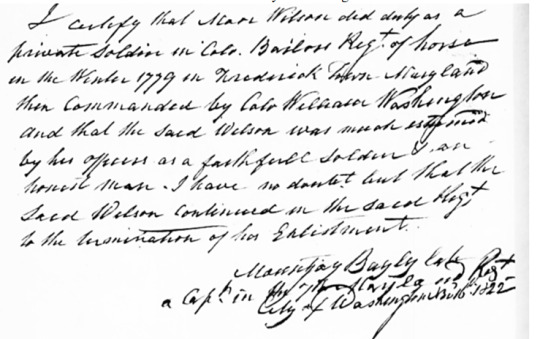
Beyond this, very little is known. There is a record that Mountjoy was involved in an 1826 case relating to unpaid amounts by insolent debtors, where he was described as a "person of good understanding and correct demeanor" as even the defendant admitted. [47] Then there is a Senate resolution proposed by Thomas Hart Benton, a strong-willed Missouri Democrat, in 1830, which went to a second reading, titled "A Bill For the relief of Mountjoy Bayly." The main text of the bill is worth reprinting here:
Be it enacted by the Senate and the House of Representatives of the United States of America in Congress Assembled, That the Secretary of War be directed to pay Mountjoy Bayly his commutation of five years full pay as a Captain in the Maryland line, in the war of the Revolution: Provided, He shall satisfy the Said Secretary that he was entitled to such commutation and never received it from the United States.
© 2016-2023 Burkely Hermann. All rights reserved.
#1810s#washington d.c.#enslavement#black history#enslaved people#courts#court cases#charts#dc fourth ward#manumission#1820s
0 notes
Note
What happened to Camille in the immediate aftermath of the Champ du Mars ? I know Danton went to England , but I’ve heard Camille stayed in Paris…if so why was he not arrested, or were the threats less serious than they seemed ?
On the evening the same day as the massacre we find Camille at the Jacobin Club:
M. DESMOULINS — I would not like it to be said in any circular writing that we are in split with the National Assembly. Certainly, where MM. Robespierre and Pétion are, there is no split with the National Assembly. As for sending your address by post without using the Assembly's countersignature, I must warn you that, for six weeks, none of my numbers have been received in Marseille; and yet I sent more than twelve hundred, for which I have receipts from the post office.
Five days later, the the Moniteur could report that the journalists Suleau and Verrières had been arrested, and that the authorities had also fruitlessly gone looking for Fréron, Legendre, Desmoulins and Danton, the latter three, the journal assures, having already left Paris. In Camille’s case, we know the place he, together with Fréron, fled to was Lucile’s parents country house at Bourg-la-Reine:
You (Fréron) know my father-in-law, Citizen Duplessis, a good commoner and son of a peasant, blacksmith of the village. […] An old clerk’s wallet, which had been discarded, forgotten above a cupboard in a heap of dust, and which he had not touched or even thought about for perhaps ten years, and on which they managed discovered the imprint of a few fleur-de-lis, under two fingers of filth, completed the proof that citizen Duplessis was suspect, and thus he was locked up until the peace, and seals put on all the gates of this countryhouse where you remember, my dear Fréron, that we both found an asylum which the tyrant dared not violate after we were both ordered to be seized after the massacre of the Champ-de-Mars.
Camille in number 4 of the Vieux Cordelier (December 24 1793)
At that time, if you (Camille) remember, you were incognito in Paris. You said then that you were in Marseille, in the land of liberty, the only place where one can speak the language of truth. This was not very true, as you know, because while you were believed to be in Marseille, you evaded the pursuits that were being made for the affair of the Champ de Mars, in the gardens of your father-in-law, two leagues from Paris. I, however, remained at my post, and I defied the accuser Bernard, and I entrusted you with my protection, brave Camille, in your little secret journeys from what was formely known as Bourg-la-Reine.
Révolutions de Paris by Prudhomme, number 188 (February 9 1793)
In number 34 of Gazette des nouveaux tribunaux (August 26 1791) Camille was accused ”of having made incendiary remarks at Café Procope café, of having provoked murder, saying that it was necessary to shoot the national guards, and that the assignats were the heritage of the workers of the charity workshops.” This was however only based on a petition that may or may not even have been written by Camille that didn’t contain any calls to arms or violence whatsoever. Because of this, the charges against him were dropped, and on September 3 we find Camille presenting himself at the National Assembly to stand for election to the Legislative Assembly. On October 7, he gets mentioned as taking part in the debates at the Jacobin club once again, after more than two months of silence. The same month he could also release the eighty-sixth and final number of Révolutions de France et de Brabant, which had been unable to appear for almost three months (number 85 having been released on July 18, the day right after the massacres). In it, Camille blamed Lafayette for having forced an end to his career as a journalist.
14 notes
·
View notes
Text



18/19 september
Naar Polen/Poznan
Halverwege de middag was het op zo'n tijdstip dat als de zon door de bomen zou schijnen je dan van een glas bokbier kon nippen of zoals nu je na negen jaar deed, de Poolse grens passeren, ook geen ongenoegen. Het landschap was vanaf Nederland heel verschillend geweest, nu kwamen we in een groot dennenwoud terecht, wel meer dan een uur lang, pas daarna kon je in het licht heuvelachtige landschap in de verte een kerktorentje zien dat omgeven werd door betonnen drielaags flats, een geheel dat niet echt bij elkaar paste. Waar we ons precies bevonden wist ik niet, voor een globale indruk had ik echter een kaart uit 1980! , meegenomen. Een detail bracht me terug naar die beklemmende tijd van het IJzeren Gordijn. Er stonden wegen op die dieprood waren ingekleurd, en alleen op deze wegen mocht je rijden.
Tegen de avond bereikten we Poznan, een stad met een half miljoen inwoners. Op een straatnaambord stond Ulica Jana Pawla II en een zijstraat heette 4 C.... en nog iets 1989. De eerste was makkelijk... dat kon niet anders dan de Johannes Paulus II straat zijn, maar de tweede? Dat had ik later uitgezocht en het bleek de 4 juni 1989 straat te zijn. 4 juni? Volgens mij was het neerslaan van de demostranten op het plein van de Hemelse Vrede in Beijing op 5 juni van dat jaar, maar daar zou het vast wel niet naar vernoemd zijn.
Door de regen liepen we naar de oude binnenstad van Poznan, er stonden prachtige panden die merendeels opgeknapt waren, maar ook de niet opgeknapte panden straalden charme uit, zeker op deze ochtend waar de met kinderkopjes geplaveide straten glansden. Op elke straathoek stonden beelden van belangrijke figuren uit de Poolse geschiedenis. En een monument waar de opstand tegen het communistische bewind in 1956 herdacht wordt. Het werd droog juist op het moment dat we een café verlieten na koffie en overheerlijk gebak. Poznan een mooie stad, waar je in de gebouwen nog veel van de Pruissische invloed (1793-1918) kan herkennen.
Eénmaal terug in het hotel livebeelden van de funeral van The Queen op Windsor Castle. Je ziet een doedelzakspeler langzaam uit beeld lopen, het geluid sterft langzaam weg. Door de regen en de wind kon het vandaag koud zijn, dit levert echt kippenvel op.
0 notes
Photo
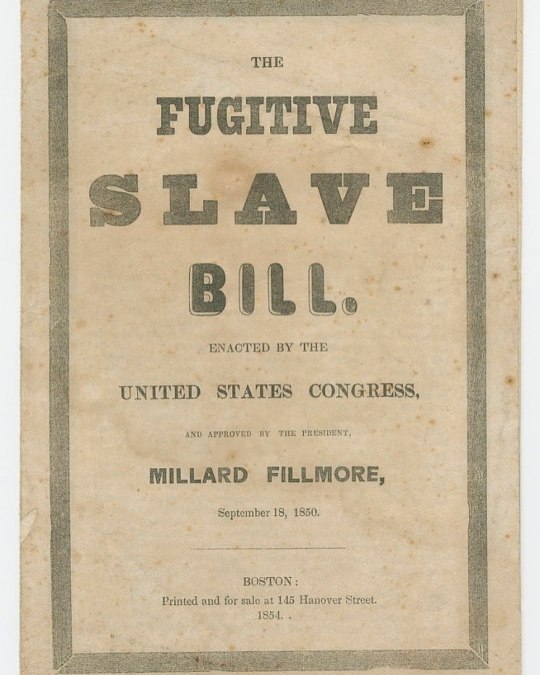
The Fugitive Slave Act or Fugitive Slave Law was passed by Congress on September 18, 1850, as part of the Compromise of 1850 between Southern interests in slavery and Northern Free-Soilers. The Act was one of the most controversial elements of the 1850 compromise and heightened Northern fears of a slave power conspiracy. It required that all escaped slaves, upon capture, be returned to the slaver and that officials and citizens of free states had to cooperate. The earlier Fugitive Slave Act of 1793 was a Federal law that was written with the intent to enforce Article 4, Section 2, Clause 3 of the Constitution, which required the return of escaped enslaved people. It sought to force the authorities in free states to return fugitives of enslavement to their enslavers. Many Northern states wanted to disregard the Fugitive Slave Act. Some jurisdictions passed personal liberty laws, mandating a jury trial before alleged fugitive slaves could be moved; others forbade the use of local jails or the assistance of state officials in the arrest or return of alleged fugitive slaves. Juries refused to convict individuals who had been indicted under Federal law. The Missouri Supreme Court held with the laws of neighboring free states, that enslaved people who had been voluntarily transported by their enslavers into free states, with the intent of the enslavers' residing there permanently or indefinitely, gained their freedom as a result. The SCOTUS ruled, in Prigg v. Pennsylvania (1842), that states did not have to offer aid in the hunting or recapture of enslaved people, weakening the law of 1793. In August 1861, Congress enacted the Confiscation Act, which barred enslavers from re-enslaving captured fugitives. The legislation was passed on a near-unanimous vote and established military emancipation as official Union policy, but applied only to enslaved people used by rebel enslavers to support the Confederate cause. Union Army forces sometimes returned fugitives from slavery to enslavers until March 1862, when Congress enacted legislation barring Union forces from returning anyone to slavery. #africanhistory365 #africanexcellence https://www.instagram.com/p/CipWZfguPjdzdqsPzKwjwTUxQlQ1_YlNqgxDHY0/?igshid=NGJjMDIxMWI=
0 notes
Text
🏙Finding the birth chart of cities🏙
(cause why not)
(Before starting I found the cities birth charts on astrotheme.com and checked with google to make sure the dates were right. I am not very clear on the timing, so the rising might be off but we’ll make it work. Also, many of the cities I’ll mention are in the west because ancient and much older cities in the east may not have a record of establishment and some were destroyed and reinhabited later by other people so it all gets foggy with those. Plus, I will be using the cities modern name in English)

🗽New York City🗽
- May 16th 1626, 08:56 AM
Sun: Taurus (11th)
Moon: Capricorn (7th)
Rising: Cancer
Mercury: Gemini (11th)
Venus: Taurus (11th)
Mars: Cancer (12th)
Jupiter: Libra (4th)
Saturn: Virgo (3rd)
Uranus: Leo (2nd)
Neptune: Libra (4th)
Pluto: Taurus (11th)
MC: Aries
N.node: Virgo (2nd)
Lilith: Libra (4th)
- Other notes:
11th house stellium
The Square aspect occurs the most
The Sun is the most aspected planet
Earth dominant
Cardinal dominion
Moon dominant
Taurus, Cancer, Capricorn dominant
⭐️Los Angeles⭐️
- September 4th 1781, 09:18 AM
Sun: Virgo (11th)
Moon: Aries (6th)
Rising: Libra
Mercury: Leo (10th)
Venus: Libra (12th)
Mars: Capricorn (3rd)
Jupiter: Scorpio (1st)
Saturn: Sagittarius (2nd)
Uranus: Cancer (9th)
Neptune: Libra (12th)
Pluto: Aquarius (4th)
MC: Leo
N.node: Aries (6th)
Lilith: Aries (6th)
- Other notes:
12th house dominant
Both aspects Sextile and Square occur 6 times each
The Moon is the most aspected planet
Air dominant
Cardinal dominant
Venus and Pluto dominant
Libra dominant
⛩Tokyo⛩
- April 3rd 1457, 03:40 PM
Sun: Aries (8th)
Moon: Leo (11th)
Rising: Virgo
Mercury: Taurus (8th)
Venus: Taurus (9th)
Mars: Cancer (11th)
Jupiter: Cancer (11th)
Saturn: Sagittarius (4th)
Uranus: Leo (11th)
Pluto: Leo (11th)
MC: Gemini
N.node: Libra (1st)
Lilith: Leo (11th)
- Other notes:
11th house stellium
The Sextile aspect occurs the most
Fire and Earth dominant
Fixed and Mutable dominant
Moon and Saturn dominant
Taurus dominant
🌰Toronto🌰
- July 30th 1793, 10:13 AM
Sun: Leo (10th)
Moon: Taurus (8th)
Rising: Libra
Mercury: Virgo (11th)
Venus: Gemini (9th)
Mars: Cancer (10th)
Jupiter: Scorpio (2nd)
Saturn: Taurus (8th)
Uranus: Leo (11th)
Neptune: Libra (1st)
Pluto: Aquarius (5th)
MC: Cancer
N.node: Virgo (11th)
Lilith: Leo (10th)
- Other notes:
10th house stellium
The Sextile aspect occurs the most
The Moon is the most aspected planet
Air dominant
Fixed dominant
Sun, Moon, Venus, Mars dominant
Taurus, Cancer, Leo, Libra dominant
🍺Berlin🍺
- October 28th 1237, 12:01 PM
Sun: Scorpio (9th)
Moon: Aquarius (1st)
Rising: Capricorn
Mercury: Libra (9th)
Venus: Scorpio (9th)
Mars: Sagittarius (10th)
Jupiter: Capricorn (1st)
Saturn: Cancer (6th)
Uranus: Capricorn (1st)
Neptune: Gemini: (5th)
Pluto: Libra (8th)
MC: Scorpio
N.node: Cancer (7th)
Lilith: Scorpio (10th)
- Other notes:
1st house stellium
9th house stelliums
The Sextile aspect occurs the most
The Sun is the most aspected planet
Water and Earth dominant
Cardinal dominant
Uranus dominant
Scorpio and Capricorn dominant
🛶Venice🛶
- March 25th 452, 00:01 AM
Sun: Aries (4th)
Moon: Scorpio (11th)
Rising: Sagittarius
Mercury: Aries (4th)
Venus: Aquarius (2nd)
Mars: Aries (4th)
Jupiter: Libra (10th)
Saturn: Libra (10th)
Uranus: Leo (8th)
Neptune: Leo (8th)
Pluto: Cancer (7th)
MC: Libra
N.node: Libra (9th)
Lilith: Capricorn (2nd)
- Other notes:
4th house stellium
The Trine aspect occurs the most
The Sun is the most aspected planet
Fire dominant
Cardinal dominant
Sun, Mars, Jupiter dominant
Aries dominant
☕️Istanbul☕️
- May 11th 330, 04:00 PM
Sun: Taurus (8th)
Moon: Leo (10th)
Rising: Libra
Mercury: Gemini (9th)
Venus: Cancer (9th)
Mars: Gemini (9th)
Jupiter: Cancer (9th)
Saturn: Leo (11th)
Uranus: Pisces (5th)
Neptune: Scorpio (2nd)
Pluto: Pisces (5th)
MC: Cancer
N.node: Aries (7th)
Lilith: Taurus (7th)
- Other notes:
9th house stellium
The Trine aspect occurs the most
Uranus is the most aspected planet
Water dominant
Cardinal dominant
Venus dominant
Cancer dominant
🎍Manila🎍
- June 24th 1571, 12:01 PM
Sun: Cancer (10th)
Moon: Leo (10th)
Rising: Libra
Mercury: Leo (10th)
Venus: Gemini (8th)
Mars: Gemini (9th)
Jupiter: Pisces (6th)
Saturn: Libra (1st)
Uranus: Capricorn (3rd)
Neptune: Gemini (9th)
Pluto: Pisces (6th)
MC: Cancer
N.node; Leo (11th)
Lilith: Cancer (10th)
- Other notes:
10th house stellium
The Square aspect occurs the most
Mercury is the most aspected planet
Air and Water dominant
Cardinal dominant
Sun dominant
Gemini, Cancer, Leo, Libra dominant
🏝Havana🏝
- July 25th 1515, 10:55 AM
Sun: Leo (10th)
Moon: Aquarius (4th)
Rising: Libra
Mercury: Leo (10th)
Venus: Cancer (9th)
Mars: Leo (10th)
Jupiter: Cancer (9th)
Saturn: Sagittarius (2nd)
Uranus: Taurus (7th)
Neptune: Aquarius (4th)
Pluto: Sagittarius (3rd)
MC: Cancer
N.node: Leo (10th)
Lilith: Pisces (5th)
- Other notes:
10th house stellium
The Trine aspect occurs the most
Fire dominant
Fixed dominant
Sun, Venus, Uranus dominant
Cancer, Leo dominant
🕌Baghdad🕌
- August 2nd 762, 09:40 AM
Sun: Leo (11th)
Moon: Scorpio (2nd)
Rising: Libra
Mercury: Cancer (10th)
Venus: Cancer (9th)
Mars: Gemini (9th)
Jupiter: Sagittarius (3rd)
Saturn: Taurus (7th)
Uranus: Taurus (7th)
Neptune: Cancer (10th)
Pluto: Scorpio (2nd)
MC: Cancer
N.node: Capricorn (4th)
Lilith: Capricorn (4th)
- Other notes:
9th house stellium
The Sextile aspect occurs the most
Water dominant
Cardinal dominant
Venus dominant
Cancer dominant
I didn’t want to do tons of cities so it won’t be alot of info to dissect.
I have noticed that Taurus, Cancer, Leo, Scorpio, Capricorn are the most reoccurring signs.
Cardinal and Fixed dominance.
11th house is very prominent in all of the cities, which makes sense because it’s the house of society, friends, cooperation, activism and freedom.
The signs that I found little to no presence of were mutable signs and especially Gemini. Even though they might be in the chart but they had little effect on the chart.
I hope you guys enjoyed this and would appreciate my nerdy infatuation with something like this. Please share your opinions and observations about the cities and their chart. Plus do you think a city can be effect by a chart.
Love you ❤️❤️❤️
#zodiacrant#zodiac#zodiac signs#signs#astrology#astro#taurus#pisces#aries#libra#virgo#aquarius#sagittarius#cancer#leo#scorpio#capricorn#gemini#astro notes#astro observations#cities#city#birth chart
157 notes
·
View notes